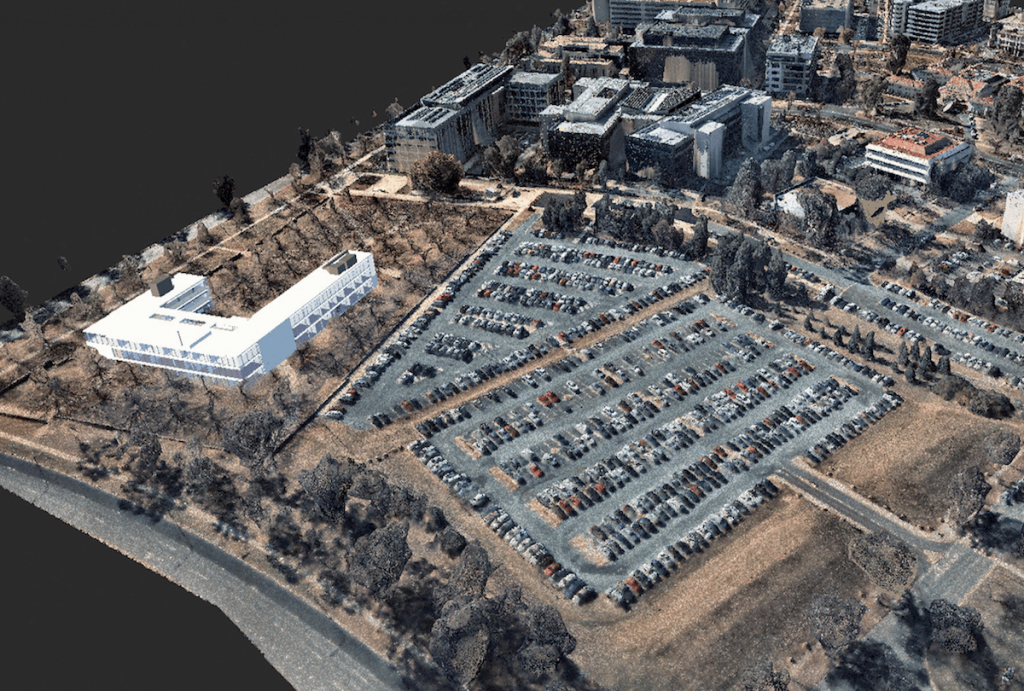What are some of the technologies driving engineering forward? According to a recent webinar presented by technology company Nearmap in partnership with Engineers Australia, innovative workflows and the use of spatial data are central.
In the webinar, key experts from the industry shared their perspectives on some of the technology and data trends they see across their projects. Ben May, the Digital Transformation Director for ANZ Buildings and Places at AECOM, was joined by Steve Grigg, the Technical Director of the Digital Advisory team at Mott MacDonald.
One trend both directors noted as being increasingly important is the concept of the ‘golden thread’, which captures all the important information about a building project across its entire lifecycle.
Weaving a golden thread
The term golden thread began in the UK following the Grenfell Tower disaster in 2017, where 72 people lost their lives in an apartment building fire. While the blaze began through a faulty electrical appliance, it was the lack of design understanding during a renovation and poor cladding material choice that caused the scale of the tragedy. The Grenfell Tower inquiry released a 2019 report into the disaster that called for a mandatory thread of design information to be captured on all high-risk buildings and stronger oversight into any future changes to them.
“I’m now seeing the golden thread here in Australia as well, with many clients and companies talking about the need for it. What it really equates to is having that quality of information throughout the lifecycle of an asset,” says Grigg.
To capture information across the entire lifecycle of a building requires significant planning, from the design phases all the way through to the decommissioning stage. With a focus on the lifecycle of a project already part of its core approach, Building Information Modelling (BIM) is a natural fit to help capture the golden thread.
Common Data Environments
To collaborate through BIM and build a golden thread, all companies involved in the design and construction should operate within a Common Data Environment (CDE). A CDE is essentially a single source of truth for the project, a system and space where all project partners have access to the same approved information. That information often includes all relevant site documentation, technical content, graphical assets for the project and so on.
It’s in offering an array of crucial information where Nearmap can really assist. The company specialises in high resolution aerial photography, city-scale 3D datasets and integrated spatial tools. It also offers subscribers regularly updated property insights. It’s up-to-date, detailed data and assets seamlessly integrate with CDEs, meaning Nearmap provides a single source of truth for geo-spatial information.
“CDEs are really the backbone of delivery. They are central to the ISO 19650 delivery framework and enable the structured data workflows necessary for consistency within delivery,” says May.
“In an ideal world, we would have just the one CDE where everything sits and is housed,” says Grigg. “But the reality is that quite often on infrastructure projects, we have to deal with more than one CDE and more than one system. Many partners have their own bespoke system and require integration as they don’t always talk well with each other.”
When data is structured and captured in one place, it opens the door for analysis and automation to create new opportunities.
“There are hundreds of different sources of data that are brought together in a project to make the concept of the golden thread work, often with varying specifications and levels of quality,” says Angela Catalan, director of global product marketing at Nearmap. “Our frequently updated and wide-scale location data can act as an anchor. When you have to consolidate hundreds of layers of data, you want it to be anchored by something reliable.”
The emergence of digital twins
Digital twins are real-time virtual counterparts to physical objects or processes. According to the panellists, while their usage in Australia is on the rise, it is still early days.
“We’re seeing a real focus on spatial digital twins that enable some interesting use cases. They are starting to be used for planning around sustainability, budgeting and evidence-based decision making. However, the broader integration of them seems to be something not widely focused on at this stage,” says May.
Catalan agrees and adds her own thoughts about how they interact with BIM.
“BIM includes the temporal element across it all to capture information about the entire lifecycle of a building at its various stages. Digital twins seem to be more useful as a real-time model of what is happening. They also go beyond the one building, and can encompass an area made up of a number of other BIM models,” she says.
Catalan is excited to hear how Phil Christensen from Bentley Systems utilises digital twins as part of his workflow. As a guest speaker at the Nearmap annual customer event, Nearmap NAVIG8, Christensen will highlight how Bentley Systems optimise the planning, delivery and maintenance of infrastructure assets through 3D digital twins with the help of Nearmap location intelligence. The event will unpack how digital twins are created and what data is required to make a reliable digital twin. It streams live on 20 October 2021 and registrations are now open online.
The central importance the construction sector plays in Australia is assured, but what the future looks like will depend on the speed with which key players adopt new technologies. If they take full advantage of virtual and digital workflows, nothing will stand in the way of the progress of the built environment.
To learn more about Nearmap data and how it can help your workflows, you can request a demo with the team.

